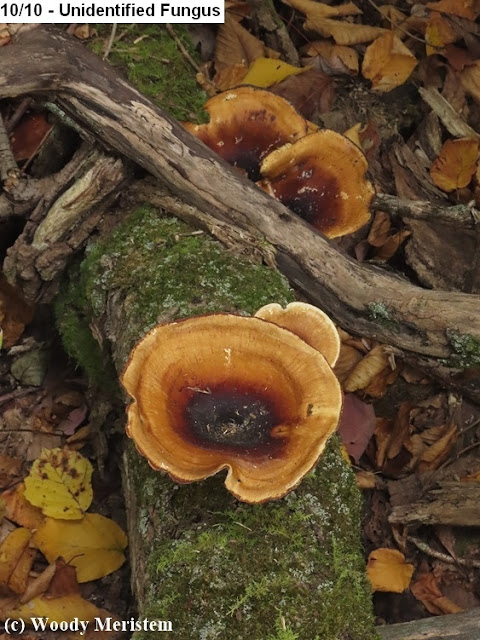When someone mentions a turkey tail the spread tail of a wild turkey is what usually comes to mind –
But this isn’t about the bird that was featured in this post but a few weeks ago.
It may be winter and the woods may seem to be a study in brown, gray and white with a touch of green here and there. But, as long as the snow's not too deep, or if the ground is bare of snow, there’s a good chance that any walk in the woods will reveal small spots of color.
Those spots of color are this post’s turkey-tails. They're the fruiting bodies of one of the most common fungi in the woods. Today’s turkey-tails can be found, often in abundance, on dead logs and stumps of many hardwood trees; there they are important decomposers of dead trees and fallen branches. They may have bands of brown, tan, white and/or several shades of dark red; other specimens sometimes have bands of blue or green.
Just to confuse matters there are other species of fungus called false turkey-tails that exhibit similar banding on their upper surface.
The turkey-tails are some of the most colorful things in the winter woods and add interest to a woodland walk at any time. Here are examples of turkey-tails –
And false turkey-tails –
And here are two photographs of the same cluster of turkey-tails exhibiting the change in color with age –
Next time you take a walk in the forest take a look at some of those rotting fallen logs, chances are you’ll find some turkey-tails. And thank those turkey-tails for clearing your way of fallen trees and recycling their nutrients.




















































































































